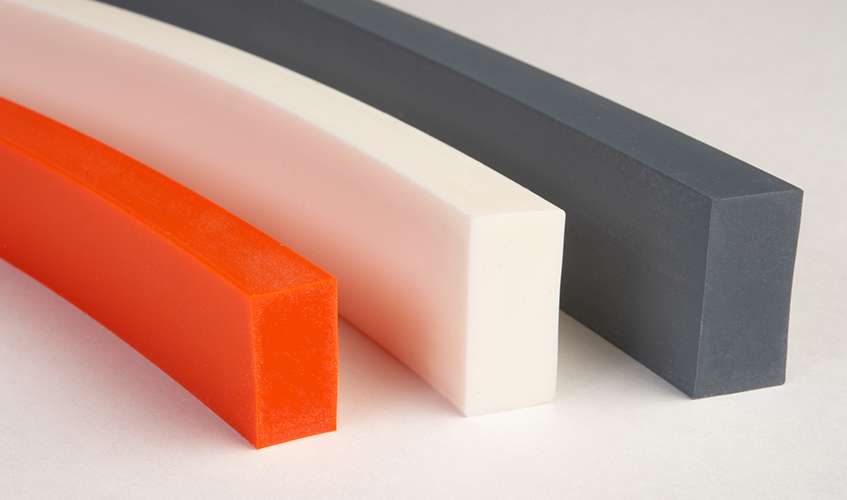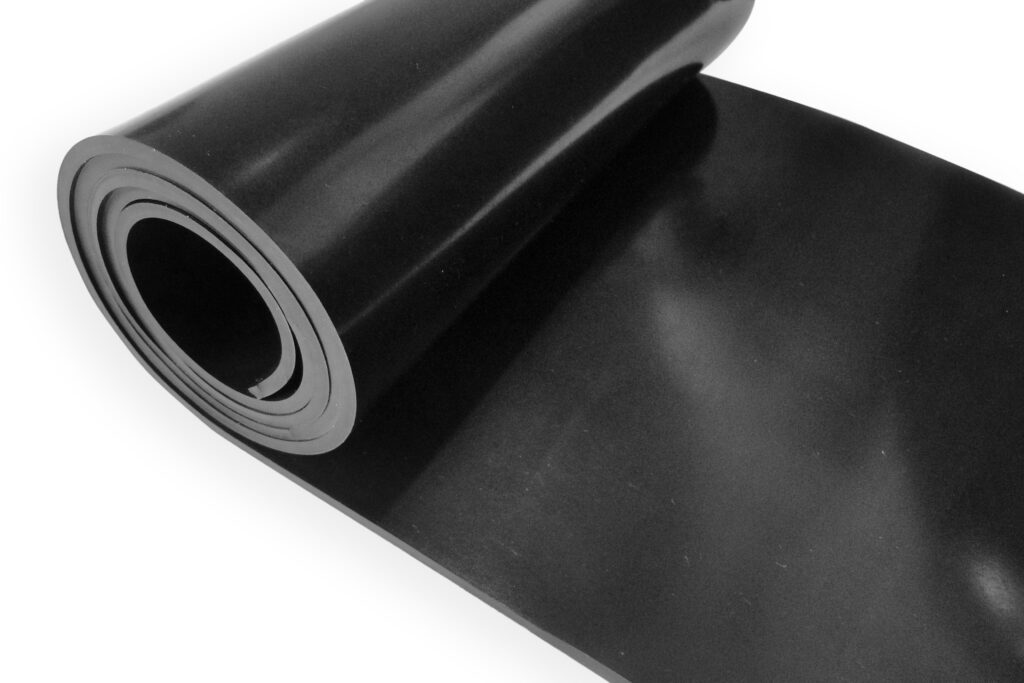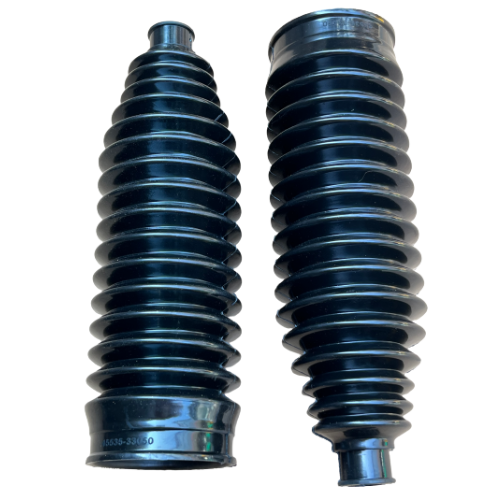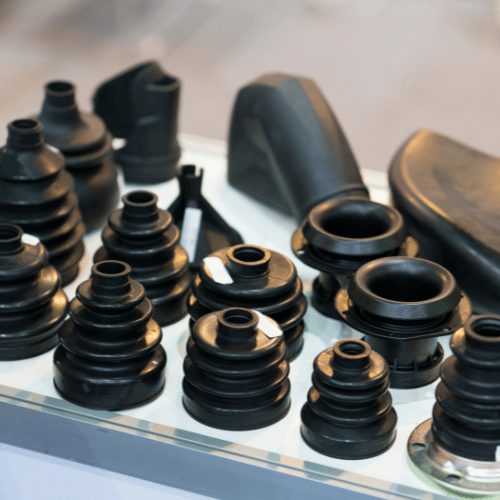Matières premières pour pièces automobiles en caoutchouc
Introduction aux pièces automobiles en caoutchouc
Les pièces automobiles en caoutchouc font partie intégrante de l'industrie automobile et jouent un rôle essentiel dans l'amélioration des performances et de la longévité des véhicules. Ces pièces, qui comprennent une large gamme de composants tels que des joints, des œillets et des pneus, sont reconnues pour leur flexibilité, leur durabilité et leur résilience dans diverses conditions d'utilisation. Les propriétés uniques du caoutchouc, notamment sa capacité à absorber les chocs et les vibrations, en font un matériau idéal pour les applications automobiles, contribuant significativement au confort et à la sécurité des véhicules.
L'importance du choix des matières premières est primordiale pour les pièces automobiles en caoutchouc. La qualité du caoutchouc utilisé a un impact direct sur l'efficacité et la fiabilité de ces composants, affectant ainsi tous les aspects, des performances du moteur à la tenue de route générale du véhicule. Les différentes formulations de caoutchouc, influencées par le choix des matières premières, peuvent altérer leur stabilité thermique et leur longévité, facteurs essentiels pour les applications automobiles soumises à des températures extrêmes et à des conditions de charge variables.
Pour bien comprendre l'impact des pièces automobiles en caoutchouc, il est essentiel de connaître les cinq matières premières clés qui constituent la base de leur production. Il s'agit du caoutchouc naturel, du caoutchouc synthétique, du noir de carbone, des huiles de traitement et de divers additifs améliorant certaines qualités, comme la résistance au vieillissement et aux facteurs environnementaux. Chaque matériau joue un rôle crucial dans les caractéristiques et l'efficacité des pièces automobiles en caoutchouc, faisant de leur choix un aspect fondamental de la fabrication automobile. Dans les sections suivantes, nous nous pencherons sur chacun de ces matériaux, en explorant leurs fonctions et leur importance dans la production de composants automobiles en caoutchouc fiables et performants.
1. Caoutchouc naturel (NR)

Le caoutchouc naturel (NR), principalement issu du latex de l'hévéa (Hevea brasiliensis), joue un rôle essentiel dans la production de pièces automobiles en caoutchouc. Le processus d'approvisionnement consiste à extraire le latex de l'écorce de ces arbres, ce qui permet de le récupérer sans endommager l'arbre lui-même. Cette pratique durable contribue non seulement à la longévité des hévéas, mais aussi aux moyens de subsistance de nombreux agriculteurs des régions tropicales où ces arbres prospèrent. Le latex récolté est ensuite transformé pour former du caoutchouc naturel, qui présente une multitude de propriétés uniques qui le rendent particulièrement adapté aux applications automobiles.
L'une des caractéristiques les plus remarquables du caoutchouc naturel est son élasticité exceptionnelle, qui lui permet de se déformer considérablement sous l'effet de l'étirement tout en reprenant sa forme initiale. Cette propriété est essentielle pour divers composants automobiles tels que les joints et les bagues, où la flexibilité et un ajustement parfait sont essentiels à la performance et à la durabilité. De plus, le caoutchouc naturel possède une résilience et une résistance à l'usure remarquables, ce qui en fait un matériau idéal pour les pièces soumises à des mouvements et des frottements constants. Ces qualités garantissent l'intégrité des pièces automobiles en caoutchouc au fil du temps, améliorant ainsi la fiabilité des véhicules.
Cependant, malgré ses nombreux avantages, le caoutchouc naturel présente des limites. Il est intrinsèquement sensible à la dégradation due aux facteurs environnementaux, notamment aux rayons ultraviolets (UV) et à l'ozone, ce qui peut entraîner une réduction de ses propriétés mécaniques et de sa durée de vie. Cette vulnérabilité nécessite une attention particulière lors de la fabrication et du traitement des pièces en caoutchouc, ce qui conduit souvent à des innovations en matière de formulation et d'additifs qui atténuent ces effets. Comprendre ces propriétés intrinsèques et ces limites du caoutchouc naturel est essentiel pour optimiser son efficacité dans les applications automobiles et garantir que les composants techniques continuent de fonctionner comme prévu tout au long de leur durée de vie.
2. Caoutchouc de silicone (HTV)

Le caoutchouc de silicone vulcanisé à haute température (HTV) est un matériau spécialisé reconnu pour ses propriétés remarquables, notamment dans le secteur automobile. L'un de ses principaux avantages réside dans son extraordinaire résistance à la température, capable de supporter des températures allant de -60 °C à 230 °C. Cette résistance en fait un choix idéal pour diverses applications automobiles où l'exposition à des températures extrêmes est une préoccupation courante.
Outre son impressionnante stabilité thermique, le caoutchouc silicone HTV présente une excellente stabilité chimique, ce qui lui permet de conserver son intégrité lorsqu'il est exposé à une grande variété de fluides et de conditions automobiles. Cette caractéristique est particulièrement avantageuse dans les environnements où peuvent être présents de l'huile, du carburant et d'autres produits chimiques, car elle réduit le risque de dégradation et assure la longévité des composants automobiles. De plus, le caoutchouc silicone HTV présente une résistance à l'humidité, ce qui lui confère une durabilité accrue en conditions humides ou en cas d'exposition à l'eau, fréquente dans le secteur automobile.
Une autre propriété remarquable du caoutchouc silicone HTV est sa flexibilité dans les environnements froids. Contrairement à de nombreux matériaux qui peuvent devenir cassants à basse température, le caoutchouc silicone HTV conserve son élasticité, ce qui le rend adapté à une variété d'applications soumises aux fluctuations climatiques. Dans l'industrie automobile, le caoutchouc silicone HTV est couramment utilisé pour les composants des compartiments moteurs, où l'exposition à la chaleur est fréquente, et pour l'isolation électrique, où la fiabilité des performances est essentielle pour éviter les pannes.
Grâce à ces caractéristiques, le caoutchouc silicone HTV est un matériau privilégié par les fabricants à la recherche de solutions fiables et performantes pour leurs pièces automobiles en caoutchouc. Ses nombreuses qualités améliorent non seulement la fonctionnalité des composants automobiles, mais contribuent également significativement à la sécurité et aux performances des véhicules.
3. Caoutchouc nitrile butadiène (NBR) et autres types de caoutchouc

Le caoutchouc nitrile butadiène, communément appelé NBR, est un caoutchouc synthétique particulièrement apprécié pour ses excellentes propriétés de résistance aux huiles et aux carburants. Composé d'acrylonitrile et de butadiène, il offre un matériau à la fois durable et polyvalent. L'une de ses principales qualités est sa capacité à conserver son intégrité face à des températures extrêmes et à des produits chimiques agressifs, ce qui le rend adapté à de nombreuses applications automobiles. Plus précisément, le NBR est largement utilisé dans les systèmes d'alimentation en carburant, les joints d'étanchéité et les flexibles automobiles, garantissant ainsi la fiabilité et les performances des composants critiques.
Dans le domaine de l'ingénierie automobile, la résistance du NBR aux huiles et aux carburants constitue un atout majeur, notamment pour les composants en contact direct avec l'essence ou le diesel. Cependant, si le NBR excelle dans ce domaine, il présente certaines limites, notamment en termes de résistance à l'ozone et aux intempéries. Par conséquent, pour les applications nécessitant une forte exposition aux éléments, d'autres types de caoutchouc peuvent être plus adaptés. Parmi ces alternatives, l'EPDM (éthylène-propylène-diène monomère) est un autre caoutchouc synthétique fréquemment utilisé dans l'industrie automobile. L'EPDM est particulièrement réputé pour son excellente résistance aux intempéries et aux variations de température, ce qui en fait un choix idéal pour les joints et les garnitures des véhicules soumis à diverses conditions environnementales.
Le caoutchouc chloroprène (CR), autre type de caoutchouc remarquable, mérite également d'être pris en compte dans les applications automobiles. Reconnu pour son équilibre entre résistance et flexibilité, le CR est résistant aux huiles, aux acides et à l'ozone. Il est souvent utilisé dans des applications telles que les courroies et les flexibles, où la résistance aux conditions atmosphériques est cruciale. Bien que chacun de ces types de caoutchouc – NBR, EPDM et CR – présente des propriétés et des avantages uniques, le choix dépend souvent des exigences spécifiques de l'application et des performances requises. Lors de la sélection, il convient de toujours peser les avantages de chaque type de caoutchouc par rapport à ses éventuelles limitations afin de garantir une fonctionnalité optimale des composants automobiles.
Conclusion
En conclusion, le choix de matières premières appropriées pour les pièces automobiles en caoutchouc est primordial pour le succès et la performance des composants automobiles. Tout au long de cet article, nous avons exploré différents types de caoutchouc, notamment le caoutchouc naturel, le caoutchouc de silicone, le caoutchouc nitrile-butadiène, l'éthylène-propylène-diène monomère (EPDM) et le caoutchouc chloroprène. Chacun de ces matériaux présente des caractéristiques et des avantages uniques qui peuvent avoir un impact significatif sur la durabilité et l'efficacité des pièces automobiles.
Le caoutchouc naturel, reconnu pour son excellente résilience et sa résistance à la traction, demeure un choix populaire pour de nombreuses applications. Le caoutchouc de silicone, grâce à sa remarquable résistance aux températures extrêmes et aux facteurs environnementaux, s'avère idéal pour les applications exigeant longévité et fiabilité. Le caoutchouc nitrile-butadiène se distingue par sa résistance exceptionnelle aux huiles et aux carburants, ce qui le rend indispensable pour les composants exposés à ces conditions. L'EPDM est reconnu pour sa remarquable résistance aux intempéries, garantissant ainsi des performances durables en extérieur. Enfin, le caoutchouc chloroprène offre un éventail équilibré de propriétés, ce qui en fait un choix judicieux pour diverses applications automobiles grâce à sa polyvalence.
Les fabricants doivent évaluer soigneusement les exigences spécifiques de leurs applications afin de sélectionner les matières premières les plus adaptées. Cette prise en compte améliore non seulement les performances des pièces automobiles en caoutchouc, mais contribue également à l'efficacité et à la sécurité globales des véhicules. Comprendre les avantages et les limites de chaque type de caoutchouc permet aux fabricants d'acquérir les connaissances nécessaires pour prendre des décisions éclairées. En fin de compte, un choix judicieux de matières premières se traduit par de meilleures performances automobiles, une durée de vie prolongée des composants et un meilleur rapport qualité-prix, réaffirmant ainsi le rôle crucial des matières premières dans l'industrie automobile.

Alternatives au caoutchouc naturel et au caoutchouc synthétique dans les composants automobiles
Introduction aux composants en caoutchouc pour l'automobile Le caoutchouc joue un rôle essentiel dans l'industrie automobile, servant de matériau crucial dans de nombreuses applications allant des pneus

Qu'est-ce qu'un soufflet de crémaillère de direction et comment le remplacer : un guide complet
Le système de direction de votre véhicule repose sur plusieurs composants essentiels fonctionnant en parfaite harmonie, et l'un d'eux, souvent négligé, est le soufflet de crémaillère. Ce caoutchouc souple ou thermoplastique

Composants en caoutchouc courants dans les automobiles et tableau des synonymes
Composants en caoutchouc courants dans les automobiles Les composants en caoutchouc jouent un rôle essentiel dans la fonctionnalité et la durabilité des automobiles. Nous proposons une variété de caoutchoucs automobiles